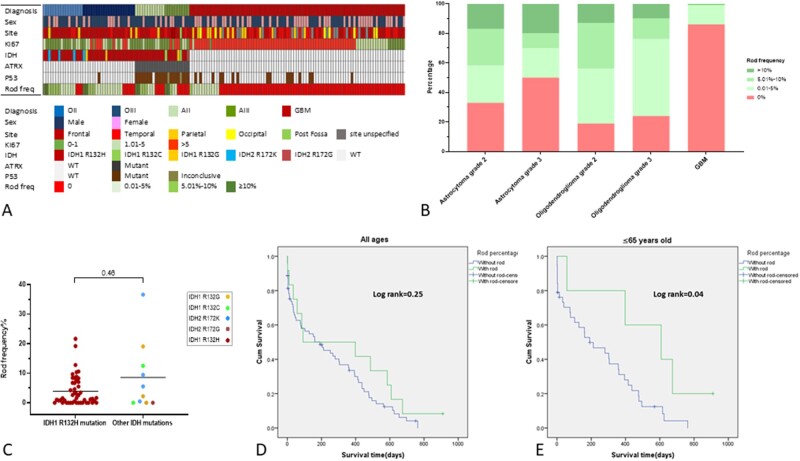FIGURE 3.
(A) Oncoprint summarizing demographic features, tumor localization, Ki67 proliferation index, IDH/ATRX/p53 mutation status, and rod frequency (freq) for our entire adult diffuse glioma cohort. (B) Bar graph showing the relative proportion of oligodendrogliomas, astrocytomas, and GBMs containing rods. Rod frequency is illustrated semiquantitatively using 5% and 10% cutoffs into 3 categories represented by increasingly darker shades of green (pink = no rods). (C) Dot plot comparing rod frequencies among gliomas with IDH1R132H mutations and those with IDH2 and noncanonical IDH1 mutations. (D, E) Kaplan-Meier analyses comparing postoperative survival among subjects with rod-positive (green) versus rod-negative (blue) IDH wild-type glioblastomas. There was no significant difference in survival among subjects of all ages whereas those 65 years of age and younger with rods exhibited significantly improved survival (E).

